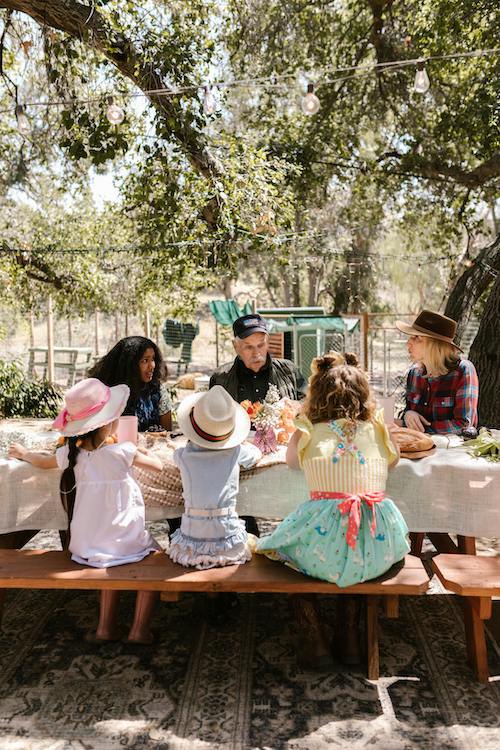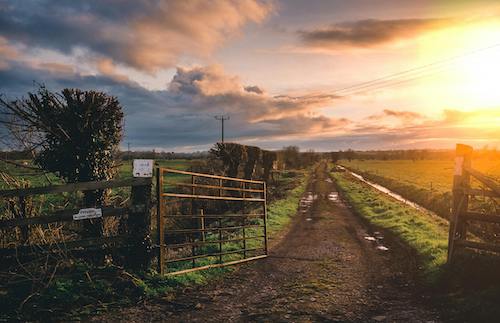How to Start Your Little Farm: A Practical Guide for those Seeking Simplicity and Wellness

If you’ve ever dreamed of owning a small piece of land in the countryside—complete with chickens, goats, and a bountiful organic garden—you’re not alone. Many of our amigas are rediscovering the joy of living simply, sustainably, and in close connection with nature, inspired by how self-sufficiently their great grandmothers lived (but with a modern twist).
What’s great is that you can start small, and plan ahead with these steps:
1. Find affordable land (it’s doable!)
2. Design your garden on paper
3. Start with chickens
4. Add goats or rabbits
5. Add bees
6. Stick to a budget
7. Engage with local community interested in fresh veggies
There are so many pros to campo life; you spend more time outside, clean fresh air, and research has even found there are health benefits when you spend time outside more often. You’ll learn how to harvest your own delicious veggies, have unlimited fruits from your orchard, and if you end up getting animals, more eggs and milk than you can ever want! Soon enough, you’ll be giving away baskets to your family and your vecinos (neighbors).
Inspired by the spirit of “Radical Senora Era,” this guide will help you take the first steps toward starting a small farm or ranchito, even if you don’t have a big budget.
Below, you’ll find the pros and cons of raising different animals, tips on where to buy affordable land, and how to keep your dream farm both practical and low-cost.
1. Choose an Affordable Area for Your Future Rural Home
When it comes to buying land or a ranchito, prices vary widely depending on location. Homesteading and sustainable living are becoming popular, driving up costs in certain regions. However, there are still areas in the United States where you can find reasonably priced land. States like Missouri, Arkansas, Tennessee, and Kentucky often have more affordable rural properties. Even in pricey states like California and New York there are affordable options, particularly outside of major cities, in places you would have likely overlooked before.
Before purchasing, research not only the land’s price but also its access to water, utilities, and the soil quality—especially if you plan to plant your own vegetable garden. These days you’ll also want to check if there is wifi access. And don’t worry, you won’t get stuck driving hours to the grocery. There are many little towns where you have a Sprouts, Trader Joe’s and are an hour or two away from a major city, but where you can still afford a nice little plot of land.
There are many older folks who are looking to move out of their ranchitos, which means there are many affordable farms waiting for you.

2. Plan Your Organic and Sustainable Garden
If you’re reading this chances are you love fresh produce and healthy cooking, and setting up an organic vegetable garden is a top priority. Start with easy-to-grow crops like tomatoes, peppers, and zucchini, which can thrive under various conditions. In the few years that I have been planting and harvesting veggies, I have never once failed with these three.
Once you get a feel for your land and garden, look into regenerative agriculture methods—such as composting and crop rotation—to maintain fertile soil without relying on expensive chemicals. Regenerative agriculture is all the rage right now, and it’s all about things like leaving pests alone to balance the ecosystem. For example, you need coyotes to eat the rabbits who eat your lettuce!
If you’re on a budget, begin small and gradually expand your garden as you gain confidence and learn which plants do well in your climate. Small gardens are just as important as large ones.
3. Get a Chicken Coop and Start with Hens
Chickens are typically the first animals new homesteaders bring onto their land, and for good reason. They’re relatively inexpensive, easy to care for, and supply you with fresh, nutrient-dense eggs. However, they do require a sturdy chicken coop and secure fencing to protect them from predators. To keep costs low, look for used coops online or at local farm sales, and consider purchasing chicks from nearby farms or community markets.
If you want to hear from an expert, check out our podcast episode where we talk to a certified rancher amiga here in SoCal about what to look for when getting your first chicken coop.
- Pros: Fresh eggs, natural pest control in the garden, and modest feed costs.
- Cons: The coop needs regular cleaning, and chickens can attract predators if not adequately protected.
4. Add Goats or Rabbits for Milk and Fertilizer
If you’re looking for fresh milk in small quantities, consider miniature goats like the Nigerian Dwarf. They’re excellent for beginners, produce a manageable amount of milk, and create nutrient-rich manure for your garden. Be sure to provide enough space for them to graze and a secure fence—they’re known for testing boundaries!
- Pros: Fresh milk for cheese or yogurt; high-quality fertilizer for your plants.
- Cons: Goats can be escape artists, requiring strong fencing and regular supervision.
Rabbits, meanwhile, can be a great choice if you have limited space. They grow quickly, their manure is rich in nitrogen (great for gardens), and they can be raised for meat or simply as pets.
- Pros: Minimal space requirements, excellent source of manure, fast reproduction.
- Cons: Require regular monitoring to avoid overcrowding, and need a clean, ventilated enclosure.
5. Incorporate Bees for Pollination and Honey
For those passionate about self-sufficiency, adding beehives can take your farming to the next level. Although you’ll need an initial investment in hives, protective gear, and equipment, the rewards are plentiful. You’ll enjoy homemade honey and improved pollination for your crops and flowers.
- Pros: Organic honey, better garden pollination, potential extra income if you decide to sell honey. Though does have a pricey startup cost.
- Cons: Requires specific knowledge and care; local regulations may apply to backyard beekeeping. Also look out for fires! Hobbyists have been known to start a fire by accident.
6. Stick to a Budget and a Frugal Mindset
Starting a small farm might seem like a big undertaking, but it’s entirely possible on a tight budget. Seek out secondhand tools, trade seeds or supplies with neighbors, and learn to do repairs and basic construction on your own. The internet is filled with tutorials and community forums where you can pick up skills without spending a fortune. Don’t be sidetracked by shining new things and cool brands. It can be done the old fashioned señora way.
7. Connect with Your Local Community
Building a small farm is about more than growing food—it’s about building community and learning from others. Attend farmer’s markets, agricultural fairs, or permaculture workshops in your area. Seek out other amigas to share resources and support each other. Establishing these local networks can help you trade seeds, share equipment, and learn valuable lessons you won’t find in textbooks. Visit farmstands outside of your town.
Embarking on a small-scale farm may feel challenging at first, but with research, planning, and a passion for simpler living, it’s well within your reach. Whether you decide to start only with a chicken coop or branch out into goats, rabbits, and bees, the journey is about living in harmony with the land. This way of life—rooted in sustainability, frugality, and community—captures the essence of the Radical Senora Era, showing that a deeper connection to Mother Earth is possible for anyone, regardless of budget.






